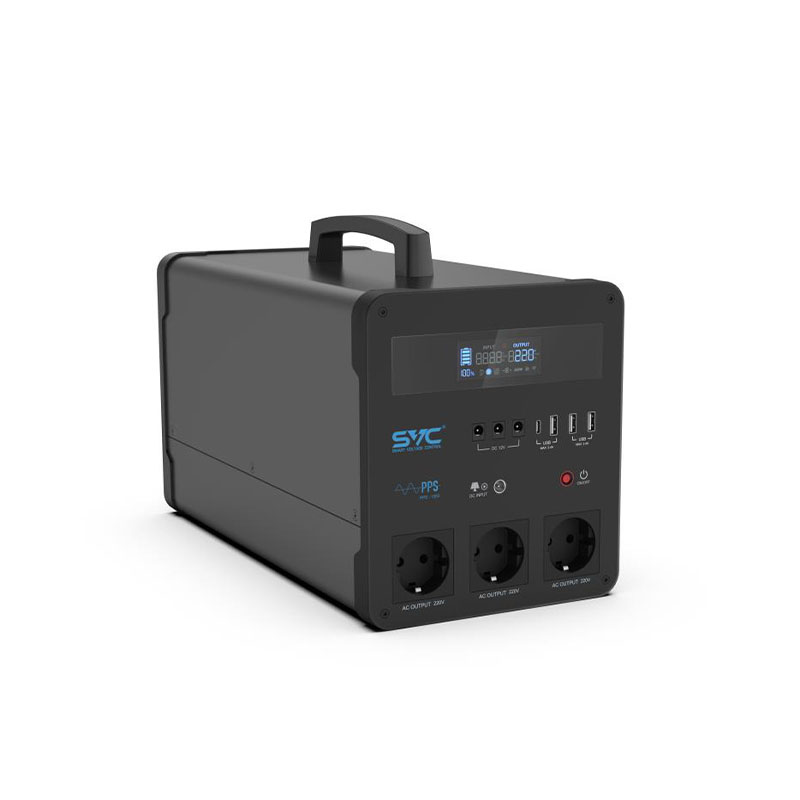
5 Things to Consider When Buying a Portable Power Station
2023-06-05 00:00
Portable power station offers necessary power supply for outdoor activities and emergency backup with the advanced battery technology. Although these portable power supply gadgets are not as powerful as gas powered generator, they are quieter, cleaner, and more eco-friendly.
Thus, getting a portable power station becomes the better solution. To help customers find a quality one, here are five things should be taken into consideration when buying a new power station.
Battery Capacity
Firstly, battery capacity is the most important specification, which designs how long the devices can be charged.
Here is the way to calculate how long a portable power station can power your device. Check its Watt-hour (Wh) rating specification. Since different manufactures use different metrics to measure the battery capacity of their portable power stations, if it only indicates battery capacity in mAh (milliamp-hours) or Ah (Amp-hours), you can take those numbers multiple its rated system voltage (12v or 24v), for example:
| Battery Amp/milliamp Hours | Battery Watt-hours 12V | Battery Watt-hours 24V |
| 10Ah/10,000 mAh | 120Wh | 240Wh |
So let's say your laptop is rated to operate at a maximum of 90W or 90Wh, and the portable power station has a battery of capacity of 40,000 mAh on a 12-volt system. Using the table above, you'll see that the power station has a battery capacity of 480Wh. If you divide that by the 90Wh that the laptop uses, you can expect around 5 hours of runtime without accounting for power loss and other variables.
Battery Technology
Battery technology is another initial factor for a portable power station. The type of battery used in a portable power station heavily determines the size, weight, cost, charging speed, and how long your power station can keep producing AC power before cutting off.
Lithium-ion (Li-Ion), lithium-polymer (Li-Po), and lead-acid batteries are the most common batteries used in portable power stations.
Lithium-ion batteries charge three times faster than lead-acid batteries and are the most energy dense out of the three. On the other hand, lithium-polymer batteries are less energy dense than Li-Ion batteries but have fast charging capabilities and are generally safer to use than Li-Ion and lead acid batteries. While lead-acid batteries are the most affordable of the three, but are also bulky, slow-charging, and have the least energy density.
If you're looking for something packable, lighter, and can be used frequently, then a Li-Ion battery is usually worth the investment. But if you want something safer, fast charging, and have the lowest passive discharge rate, then a Li-Po battery power station might be the better option.
Lead-acid batteries aren't usually recommended, but if you really need a cheap set-and-forget backup power station to use during emergencies, then a lead-acid power station should suffice.
Inverter Technology
Thirdly, the inverter technology of pure sine wave or modified sine wave. Pure sine wave inverters provide clean sine waves that produce AC, while modified sine wave inverters use pulse width modulation (PWM), which makes an electronic signal that tries to mimic a pure sine wave signal.
Peak and continuous wattage are also important specifications you should be looking for when buying a portable power station. Although portable power stations are usually used to power computers, TVs, and other electronic gadgets, they can also power things like refrigerators, corded power tools, electric fans, and kitchen appliances such as blenders and food processors. However, these devices can only be powered by a portable power station if they have enough peak and continuous wattage.
Power Input and Output Ports
Last but not least, power input and output ports. When it comes to portable power stations, you can never have enough ports for charging and powering your devices. This is especially true for DC-powered charging ports since you can always use an extension cord to have more AC outlets.
We recommend getting a portable power station with multiple USB and USB-C charging ports for your handheld devices, a 12-V charging port for your internet router, and at least 2 AC outlets. You may also want an Anderson power pole if you plan to store the power station in your car.
After looking at all the charging ports and outlets of a portable power station, you should also look for ports used to charge the power station. These would include your regular AC, DC, and solar charging ports and the Anderson power pole for charging in your car.

In Conclusion
Hope this article give a further guidance and helpful on how to buy the portable power station. If you are looking for the manufacturer of portable power station, contact us. SVC Power has 2 versions of power station, details click here. Welcome OEM&ODM with flexible MOQ.
Get the latest price? We'll respond as soon as possible(within 12 hours)












